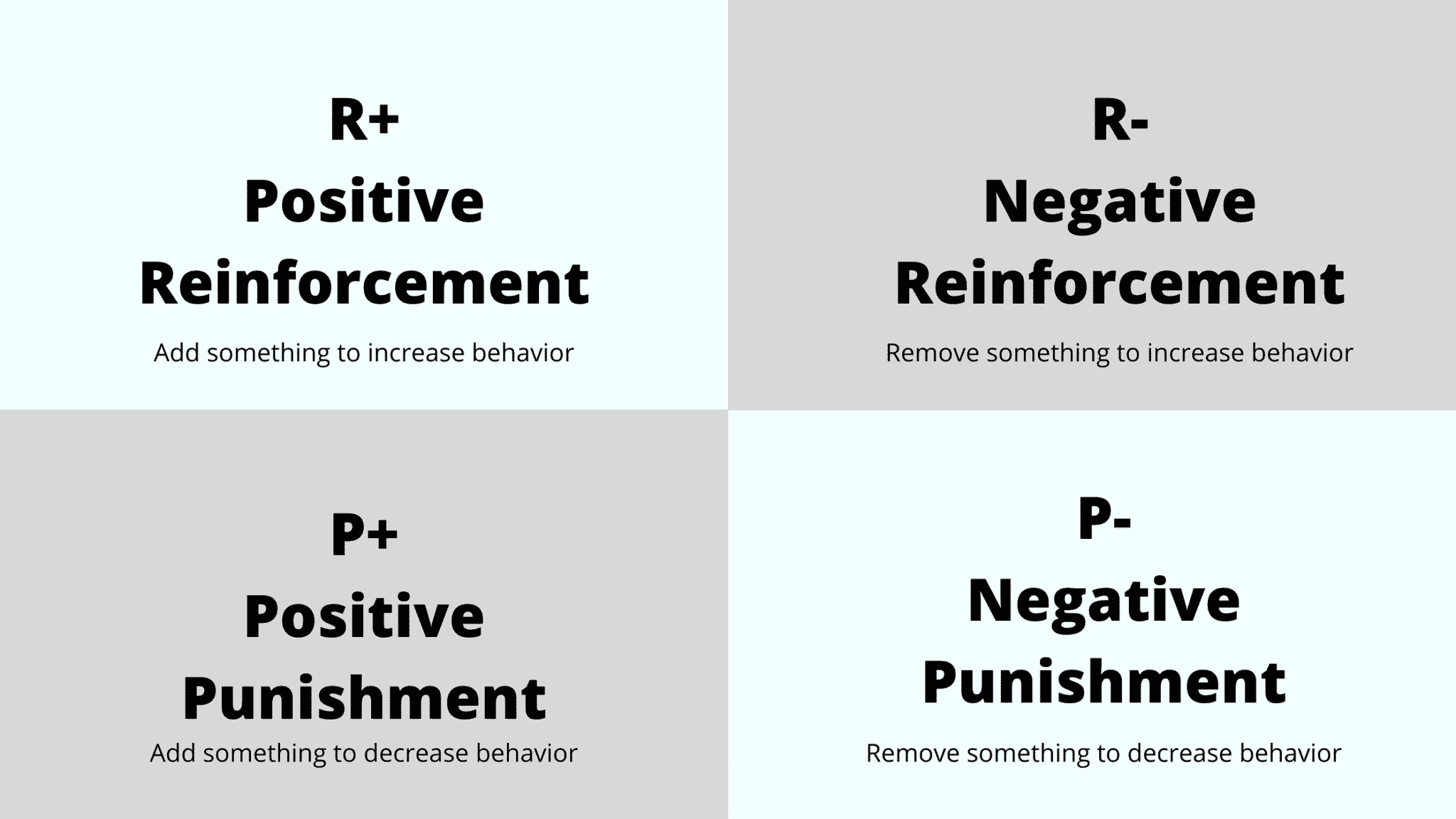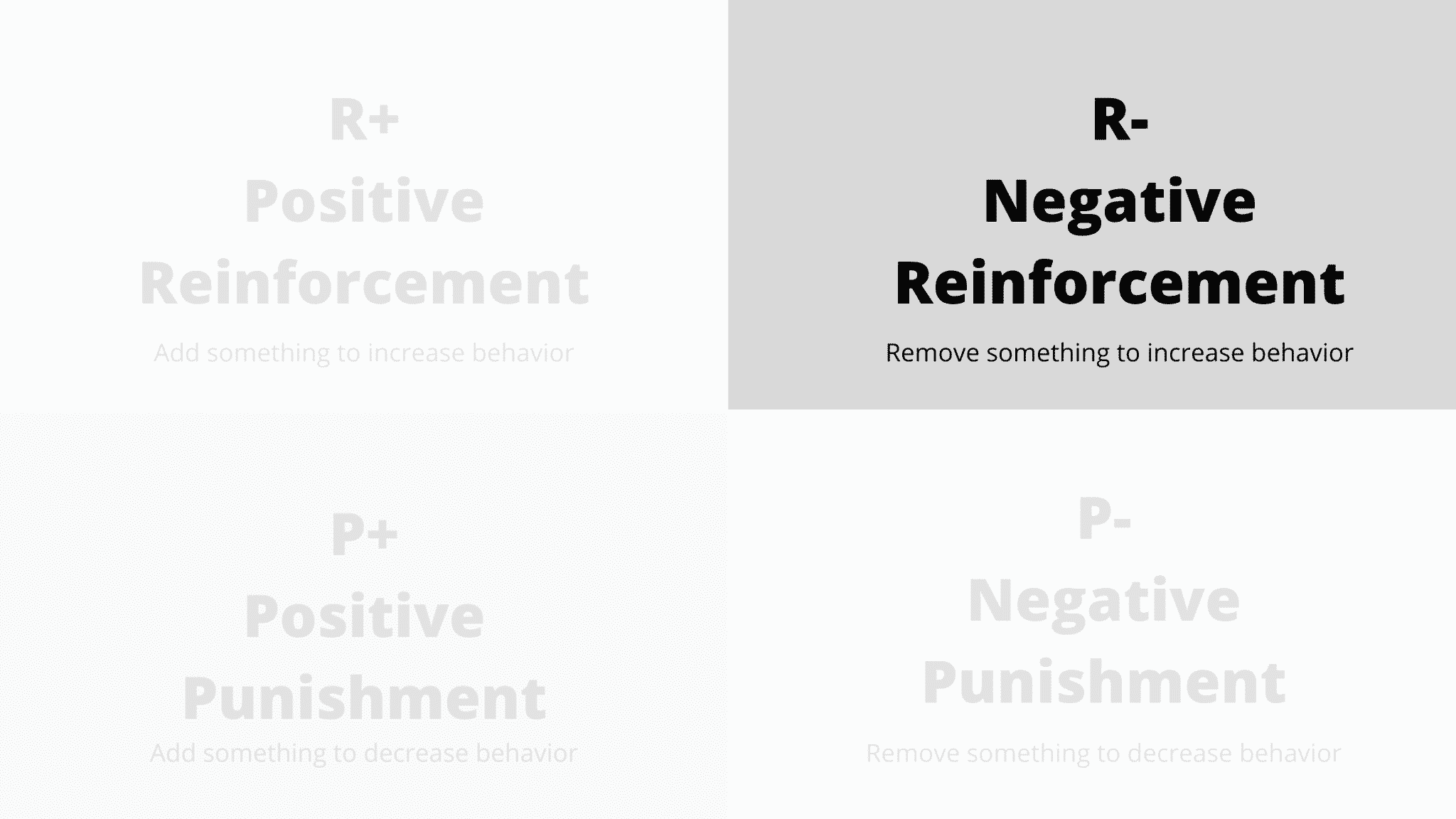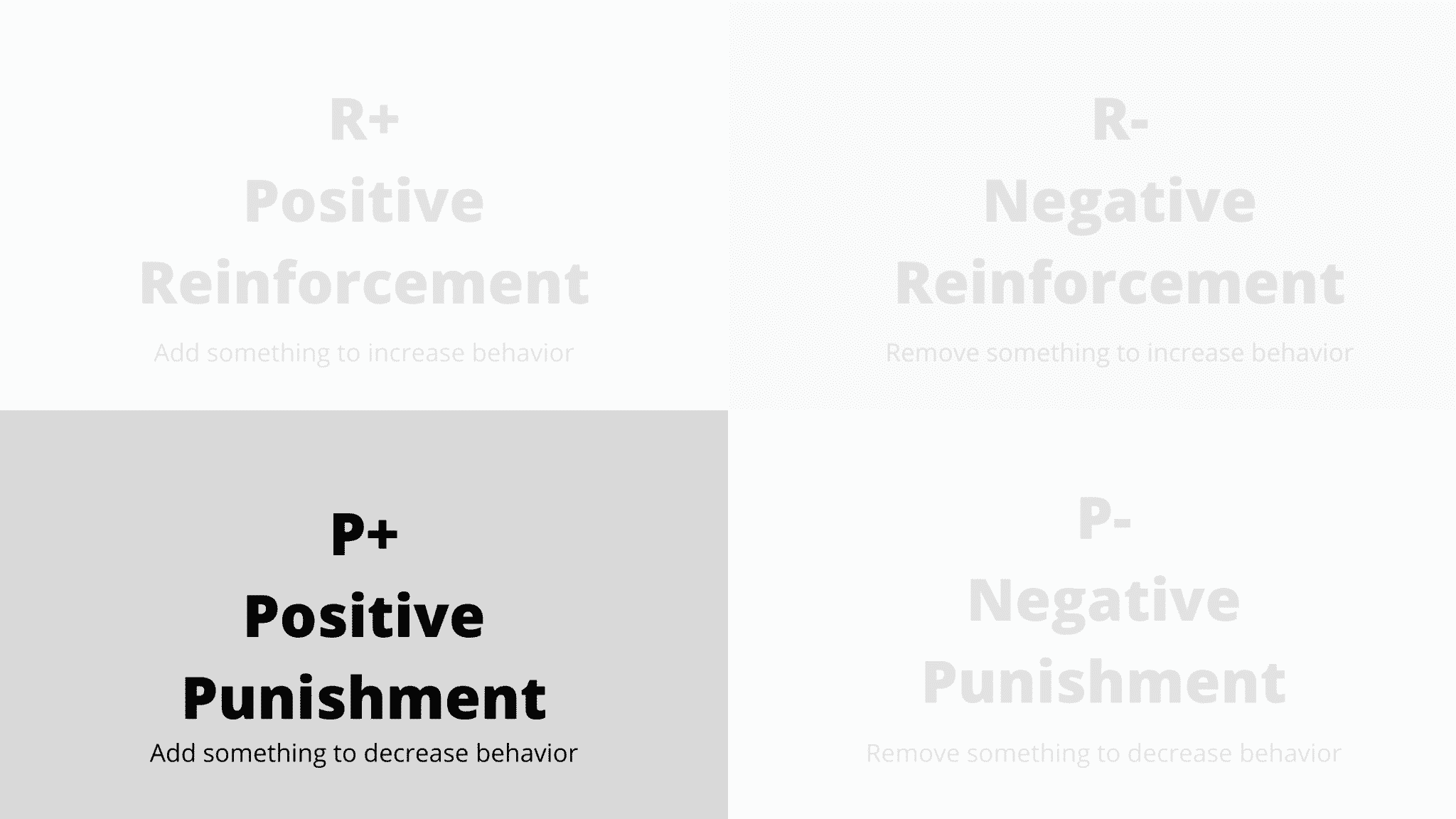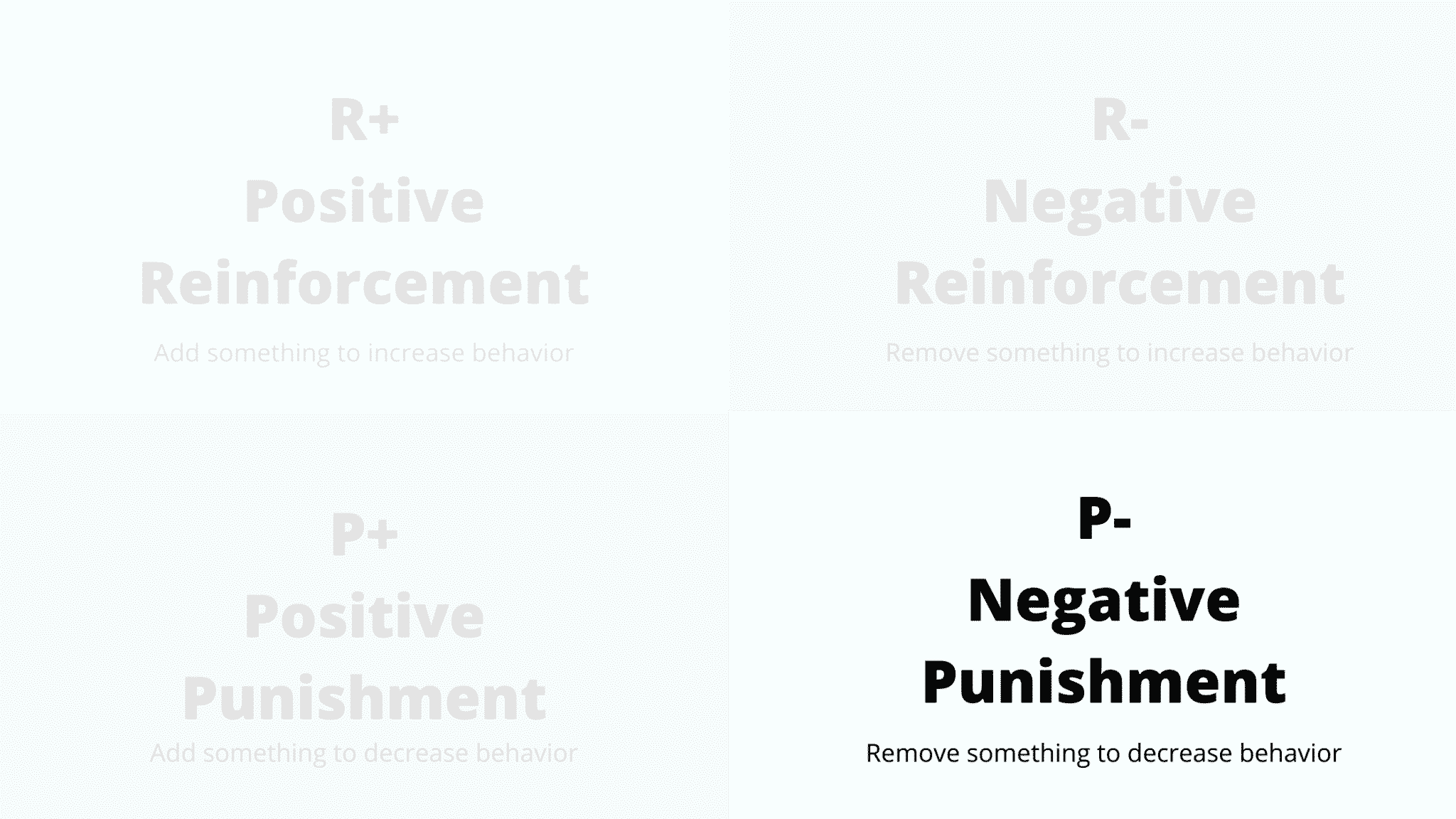Natalie and I were having a LONG discussion the other day about dog training (we both LOVE to train our Danes!) and realized that some of the nerdy and more technical aspects of dog training can be really complicated and overwhelming.
People think of training as teaching a puppy to sit, lay down and not pee in the house.
Those are basics. Easy to teach, but in the grand scheme of creating well-behaved, happy and polite family dogs those skills are just the tip of the iceberg.
If you are struggling to move past the cute puppy basics, this post is for you!
FIRST, UNDERSTAND THIS
Operant Conditioning is a big fancy word for ‘how dogs (and people) learn’.
Operant conditioning involves punishment and reward. This is where the magic of dog training comes to play.
Understanding this concept is to put magic in your hands!
We encourage you to let go of the idea that all bad behavior is the result of ‘stubbornness’ or ‘dominance’, or that all punishment means hurting or abusing a dog.
Positive does not necessarily mean ‘YAY’, and negative doesn’t necessarily mean ‘OUCH’ or bad, either!
Positive means to add something. Negative means to take it away.
Read on.
How to Teach a Great Dane to Walk on Leash
THE FOUR QUADRANTS OF OPERANT CONDITIONING
POSITIVE REINFORCEMENT: This one is easy. You can teach a dog to do nearly anything from recall (COME) and stay to silly tricks by using this quadrant!
Examples:
- A treat for sitting
- Praise for going potty outside
- An ear scratch for sitting calmly while another dog walks by
- A frozen stuffed Kong for completing a short stay (and then encouraging the stay to continue) on a mat
- A treat, praise, or play session for taking 10 steps in a row by your side (heel position)
You can even use the environment as a reward! For example, if your dog sits politely by the door and waits until you say ‘FREE’ before they run out, their access to the yard is the reward.
Positive reinforcement is NOT all about treats. It’s about adding something the dog likes to encourage the dog to increase a behavior that you want. Use that information to your advantage and think about ways to apply positive reinforcement to your routine outside of ‘sit-treat’.
With all positive reinforcement, once the behavior is ‘installed’ and starts to become reliable, you can reduce the rewards and even eliminate them.
NEGATIVE REINFORCEMENT: This quadrant is one of the most difficult to apply correctly. It involves the removal of something the dog doesn’t want or like, in exchange for them doing the behavior you want. The removal of the negative thing is the reward (reinforcement).
Examples:
- Applying pressure to the dog to sit and releasing it when they sit
- Using leash pressure to teach the dog to come back or walk nicely on a leash (pressure = turn towards you, pressure relieved is the reward for that behavior)
- Asking for a recall by using the stim on an e-collar on continuous, then turning the stim off when the dog returns (or turning it down gradually as they return, like a game of hot-cold)
- Asking a dog that is afraid of something to sit or look, then moving them away from the scary thing as a reward for doing that behavior
- Pinching a dogs ear until they take a toy into their mouth (also known as a forced retrieve), then letting go of the pinch as soon as they do (relief from the pinch is the reward for doing the behavior)
- Opening a door (barrier/restriction) in exchange for polite wait/sit behavior.
Negative reinforcement should always be paired with positive reinforcement.
POSITIVE PUNISHMENT: You use this one every single time you say the word NO to your dog! Positive punishment does not mean ‘sunshine and rainbows’. It means adding (positive, +) something the dog doesn’t like to decrease a behavior.
Examples:
- Whacking a dog in the side with a rolled up towel
- Throwing a bag of chains on the floor to startle the dog
- Spraying a dog in the face with a water bottle
- Rolling a dog on its back (alpha roll) / pinning
- Deliberately using the vibrate or stim on an e-collar as a correction
- Using beep, vibrate or shock on a cheap shock collar as a correction
- The collar on an electric fence issuing a shock when a dog crosses the boundary
- Jabbing the dog in the neck with two fingers
- Popping a prong collar with a leash
Positive punishment can mean anything from a mild correction (‘NO!’) to flat out abuse (kicking a dog or choking it). Tread cautiously with positive punishment! There is never a need to alpha roll/pin or hurt a dog. Punitive positive punishment is what gives many dog trainers a bad name.
Is your trainer relying heavily on positive punishment and calling it ‘discipline’ or ‘dominance’? We encourage you to find a new, more modern trainer!
When using an e-collar, do NOT think of it as an ‘easy’ button. It’s not. You still need to condition your dog (using positive reinforcement) to understand what the stim means and teach the behavior you want.
Only then is it appropriate to use the stim as a corrections tool, and if done correctly you’ll rarely use it that way AT ALL.
NOTE: We DO NOT condone the practice of purchasing and using cheap low quality shock collars, especially to ‘correct’ things such as puppy biting, aggression, resource guarding, crate barking or lunging. Many dogs have been ruined and become aloof, fearful and confused by this practice…plus, without guidance you lose a VALUABLE opportunity to appropriately apply stim as a positive means to communicate and strengthen behaviors. No ethical dog trainer will recommend that you use a cheap shock collar and ‘easy-button’ shock/vibrate/beep training.
Quality e-collars that use a blunt stim (similar to a tens machine and feels more like a muscle stimulation than a shock) are the only electric collars that we recommend. Dogtra, E-Collar Technologies and Garmin are brands to consider, and we recommend using them with guidance and/or diligent research.
NEGATIVE PUNISHMENT: This quadrant is when you remove something the dog finds rewarding in order to decrease a behavior.
Examples:
- Locking the trash can so the dog cannot dig through it (removal of the joy of eating trash)
- Putting a dog that jumps the fence on a leash in the yard (removal of the reward of jumping the fence)
- Turning your back on a puppy that is playing too rough with you/puppy biting or demand barking at you (removal of your attention)
- Standing with feet planted on a walk if your dog pulls (removal of the reward involved with moving forward). This one, in a way goes with Negative Reinforcement example above, that leash pressure is relieved when the dog chooses to stop pulling and turn back towards you!
- Putting the dog behind a baby gate (removal of access to guests she wants to jump all over)
Negative punishment is a very common, easy way to manage the environment and works best when you are very consistent. While the crate should NEVER be seen as punishment, it is a great tool for management and time outs!
Negative punishment, boundaries, and NOT practicing incorrect behavior go hand in hand! If you are struggling with a dog that jumps, steals, begs or destroys things negative punishment is 100% your friend.
However, negative punishment should not be used in excess; relying on restrictions to freedom, movement and choice is not always the most humane choice. ‘Errorless learning’ and strict behavior management to avoid corrections can be very frustrating, unfair and confusing to dogs so tread cautiously and always look for ways to communicate, guide, teach and train.
POSITIVE VS. BALANCED DOG TRAINING
If we really were to boil this down, there are only a few differences between a ‘positive’ trainer and a ‘balanced’ trainer.
Positive trainers try to not use positive punishment or negative reinforcement. Basically put, they will opt for behavioral management and negative punishment before using anything that may be considered a ‘correction’.
Balanced trainers will use all four quadrants, and that includes the use of e-collars, prongs and other corrections to apply positive reinforcement, positive punishment, negative punishment and negative reinforcement.
GOOD balanced trainers rely heavily on positive reinforcement, and GOOD positive trainers recognize that putting a leash on a dog or withholding a treat until the dog sits is aversive (punishing and yes, ‘balanced’) in some way.
GOOD balanced trainers use the E-Collar as a communications tool, not a corrections one. GOOD positive trainers are realistic about how no-pull and front-clip harnesses work (they are not a positive tool).
The ultimate goal of either trainer should not be to ‘beat dogs into submission’, spoil them, scare them, make them obese with treats or frustrate them…but to teach and guide dogs and owners into a harmonious and healthy relationship.
How can you apply the four quadrants of operant conditioning to strengthen your ability to communicate with your Great Dane?







Leave a Reply